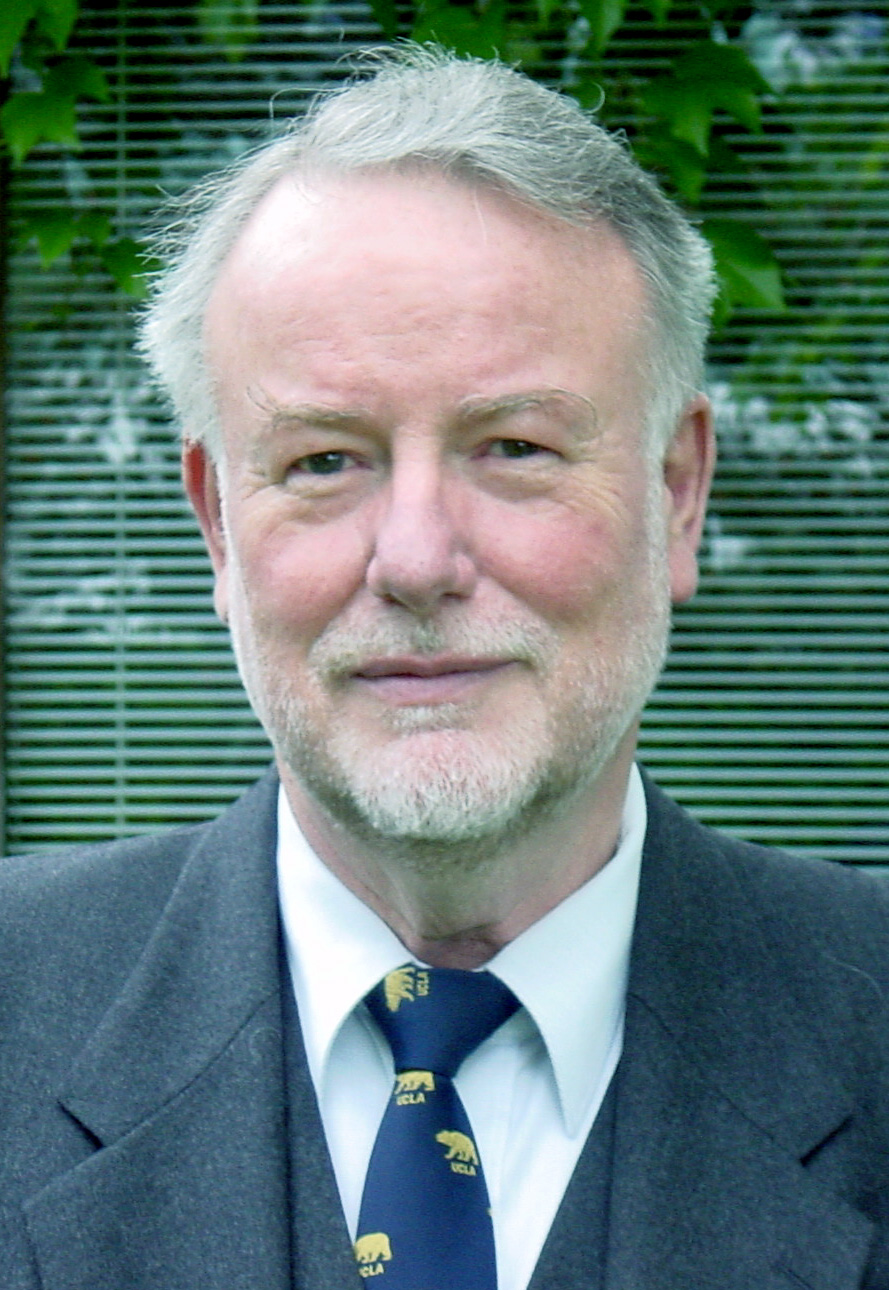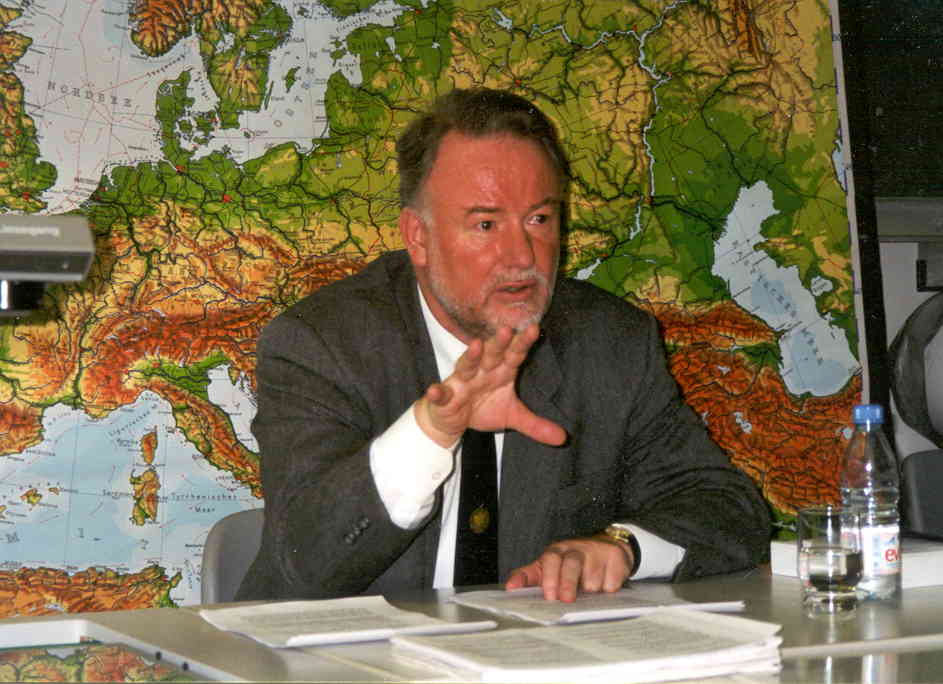
Festschrift
Video
Unterrichtsmaterialien
(Passwort erforderlich)
Publications
Languages in prehistoric Europe
Abstracts
Historical Phonology
(except consonant shifts)
German and Germanic consonant shifts
Historical Morphology
Word order studies
Typology
(except word order studies)
Syntax and Semantics
Phonology and Morphonology
General Linguistics
Introductions to General Linguistics
Rhenish Matron names
Runology
Varia
Editing
|
CV:
| 1937 |
Born May 27 in Oberhausen-Sterkrade, Germany
Full name: Theo Vennemann genannt Nierfeld
| 1943-57 |
Elementary and highschool education; highschool diploma (Abitur) of Hoffmann-von-Fallersleben-Schule, Braunschweig |
| 1957-59 |
Student of mathematics, physics and philosophy, University of Göttingen |
| 1959-64 |
Student of mathematics, German philology, and philosophy, University of Marburg. State board examination (M.A. equivalent) "mit Auszeichnung".
Thesis: "Die intuitionistische
Funktionenlehre und Algebra L. E. J. Brouwers". Supervisor: H.
Arnold Schmidt |
| 1964-65 |
Research associate, Linguistic Research Center, University of Texas at Austin (Director: Winfried P. Lehmann) |
| 1965-68 |
Student and teaching assistant in the Department of German, University of California, Los Angeles. Ph.D. in Germanic Languages "with distinction". Dissertation: "German phonology". Supervisor: Terence H. Wilbur |
| 1968-69 |
Assistant Professor of German, Department of German and Russian, University of California, Irvine |
| 1969-74 |
Assistant Professor, Associate Professor (1972), and Professor (1973) of Linguistics, University of California, Los Angeles |
| 1971 |
Visiting Professor, Linguistic Institute, LSA, at SUNY Buffalo |
| 1972 |
Visiting Professor, California Linguistic Institute, UC Santa Cruz |
| 1972-73 |
Guest Professor, Department of German, Free University, Berlin |
| 1974 to 2005 |
Professor, Chair of Germanic and Theoretical Linguistics, Department of German Philology, University of Munich
|
|
1976
(summer) |
Visiting Professor, University of Salzburg |
| 1977 |
Visiting Professor, Linguistic Summer Institute, University of Salzburg |
| 1979 |
Visiting Professor (SLE Professor), Joint Linguistic Institute of the LSA and the University of Salzburg |
| 1981-83 |
Vice Dean, Philosophische Fakultät für Sprach- und Literaturwissenschaft II, University of Munich |
1983
(summer) |
Visiting Professor, Linguistic Institute, LSA, at UC Los Angeles |
| 1983-85 |
Dean, Philosophische Fakultät für Sprach- und Literaturwissenschaft II, University of Munich |
Since
1 Oct. 2005 |
Emeritus, University of Munich |
| Nov. 2005 |
Visiting scholar, Sonderforschungsbereich "Mehrsprachigkeit", University of Hamburg |
| March-May 2010 |
Visiting Fellow, Department of Linguistics, Research
School of Pacific and Asian Studies, Australian National University,
Canberra |
German citizen, unmarried, one daughter (born 1966)
Member of Rotary Club Munich International
Paper given at the Rotary Club: "English – a German dialect?"
Teaching areas:
Grammar of Contemporary German;
History of the German language;
Theory of language incl. language change, especially phonology;
Languages in prehistoric Europe.

|

